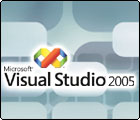
 |

|
| ActiveWin: Reviews | Active Network | New Reviews | Old Reviews | Interviews |Mailing List | Forums |
|
|
|
|
|
DirectX |
|
ActiveMac |
|
Downloads |
|
Forums |
|
Interviews |
|
News |
|
MS Games & Hardware |
|
Reviews |
|
Support Center |
|
Windows 2000 |
|
Windows Me |
|
Windows Server 2003 |
|
Windows Vista |
|
Windows XP |
|
|
|
|
|
|
|
News Centers |
|
Windows/Microsoft |
|
DVD |
|
Apple/Mac |
|
Xbox |
|
News Search |
|
|
|
|
|
|
|
ActiveXBox |
|
Xbox News |
|
Box Shots |
|
Inside The Xbox |
|
Released Titles |
|
Announced Titles |
|
Screenshots/Videos |
|
History Of The Xbox |
|
Links |
|
Forum |
|
FAQ |
|
|
|
|
|
|
|
Windows XP |
|
Introduction |
|
System Requirements |
|
Home Features |
|
Pro Features |
|
Upgrade Checklists |
|
History |
|
FAQ |
|
Links |
|
TopTechTips |
|
|
|
|
|
|
|
FAQ's |
|
Windows Vista |
|
Windows 98/98 SE |
|
Windows 2000 |
|
Windows Me |
|
Windows Server 2002 |
|
Windows "Whistler" XP |
|
Windows CE |
|
Internet Explorer 6 |
|
Internet Explorer 5 |
|
Xbox |
|
Xbox 360 |
|
DirectX |
|
DVD's |
|
|
|
|
|
|
|
TopTechTips |
|
Registry Tips |
|
Windows 95/98 |
|
Windows 2000 |
|
Internet Explorer 5 |
|
Program Tips |
|
Easter Eggs |
|
Hardware |
|
DVD |
|
|
|
|
|
|
|
ActiveDVD |
|
DVD News |
|
DVD Forum |
|
Glossary |
|
Tips |
|
Articles |
|
Reviews |
|
News Archive |
|
Links |
|
Drivers |
|
|
|
|
|
|
|
Latest Reviews |
|
Xbox/Games |
|
Fallout 3 |
|
|
|
Applications |
|
Windows Server 2008 R2 |
|
Windows 7 |
|
|
|
Hardware |
|
iPod Touch 32GB |
|
|
|
|
|
|
|
Latest Interviews |
|
Steve Ballmer |
|
Jim Allchin |
|
|
|
|
|
|
|
Site News/Info |
|
About This Site |
|
Affiliates |
|
Contact Us |
|
Default Home Page |
|
Link To Us |
|
Links |
|
News Archive |
|
Site Search |
|
Awards |
|
|
|
|
|
|
|
Credits |

|
Product:
Visual Studio 2005 Codename "Whidbey" Enterprise Developer
Edition Alpha |
The Development Environment
|
Table Of Contents |
The common IDE shows improvements in the following areas:
-
Window positioning and docking
There are new windows and most of them are designed to be able to work with them in docked, tabbed, floating and auto hide positioning modes. An example is the new redesigned Find and Replace window.
-
Debugging enhacements
Two things have called my attention in this area. The first one is the new way of handling and managing breakpoints using actions, constraints and hit counts. The second one is something that is called "visualizers" which display relevant information of the type you "mouse over" within the code window.
-
Code Editor
This is the field in where I did appreciate a true revolution. I have been reading the Microsoft weblogs of the Visual Studio Code Team and I can tell you that they are really committed on provide the best coding experience by actively looking at new alternatives. Intellisense now is available in any kind of project and language, not only .NET languages but also HTML and ASP.NET. Particularly I found it quite interesting a feature called refactoring. Refactoring is the process of improving your code after it has been written. There are many refactoring commands available. Let's see how to refactor a line of code using the "Surround With..." command.
-
Version Control System
Visual SourceSafe is a viable solution that lets you effectively manage project files. It tracks and stores changes to a file so that developers can review a file's history, return to earlier versions of the file and develop programs concurrently. The version available in this build includes many improvements regarding performance, stability, increased capacity, regional time zones and languages but the most important one is regarding connectivity because you can use Visual Studio to connect to Visual SourceSafe databases from anywhere via HTTP or HTTPS.
-
Extensibility & Customization
Visual Studio includes a programmable, project-neutral object model that provides access to the underlying components and events of the integrated development environment (IDE). This model has components that represent solutions, projects, tool windows, code editors, debuggers, code objects, documents, and events. You can extend the functionality of the IDE, automate repetitive tasks, and integrate other applications into the IDE. The object model can be used through four programming methods: macros (for automating repetitive actions), add-ins and wizards. Apart from extending itself, Visual Studio can be used to create other kind of add-ins by using their respective programming models if they are compatible with .NET or COM.
























